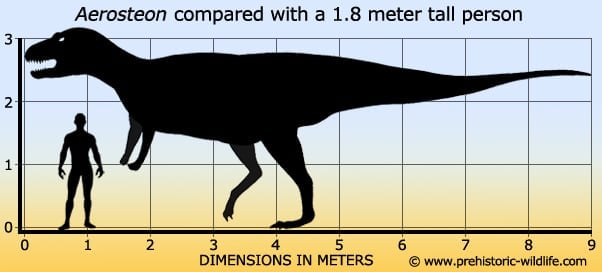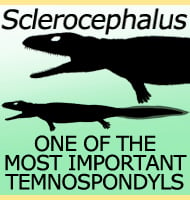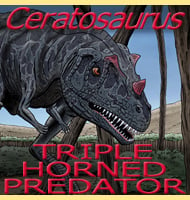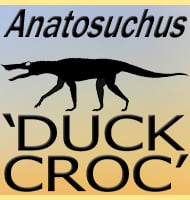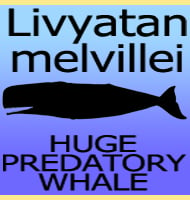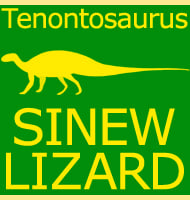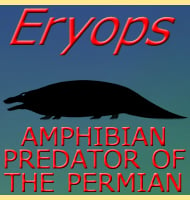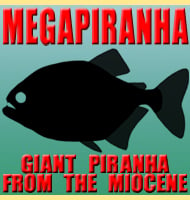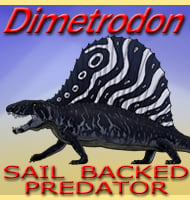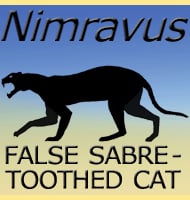In Depth
Aerosteon was a member of Megaraptora, a group of lightly built theropod dinosaurs that are notable for having enlarged claws upon their hands. The name of this group is derived from the misidentification of first member of the group, Megaraptor being misdentified as a dromaeosaurid ‘raptor’ based upon the presence of a single large claw. however new discoveries including Australovenator allowed for correct idenitfication as well as the establishment of a new group.
Aerosteon is very special both amongst this group and large theropods in general because ot the air filled spaces (a process called pneumatisation) within its bones. Not only would this have made the bones bery light weight but it may have supported an avian type respiratory system similar to what we see in birds today. Aside from being more support for the descendency of birds from dinosaurs, this would have allowed a greater amont of airflow to and from Aerosteon’s lungs. Speculated to originally been an aid in temperature regulation, it would have allowed a faster rate of respiration with may infer a very active predatory lifestyle for Aerosteon.
Further Reading
-Evidence for Avian Intrathoracic Air Sacs in a New Predatory Dinosaur from Argentina – In Kemp, Tom. PLoS ONE 3 (9): e3303 – P. C. Sereno, R. N. Martinez, J. A. Wilson, D. J. Varricchio, O. A. Alcober & H. C. E. Larsson – 2009. – A new clade of archaic large-bodied predatory dinosaurs (Theropoda: Allosauroidea) that survived to the latest Mesozoic – Naturwissenschaften 97 (1): 71–78 – R. B. J. Benson, M. T. Carrano & S. L. Brusatte – 2010.
